What is TyphoonOnDemand?
Typhoon gives control back to the independent filmmaker.
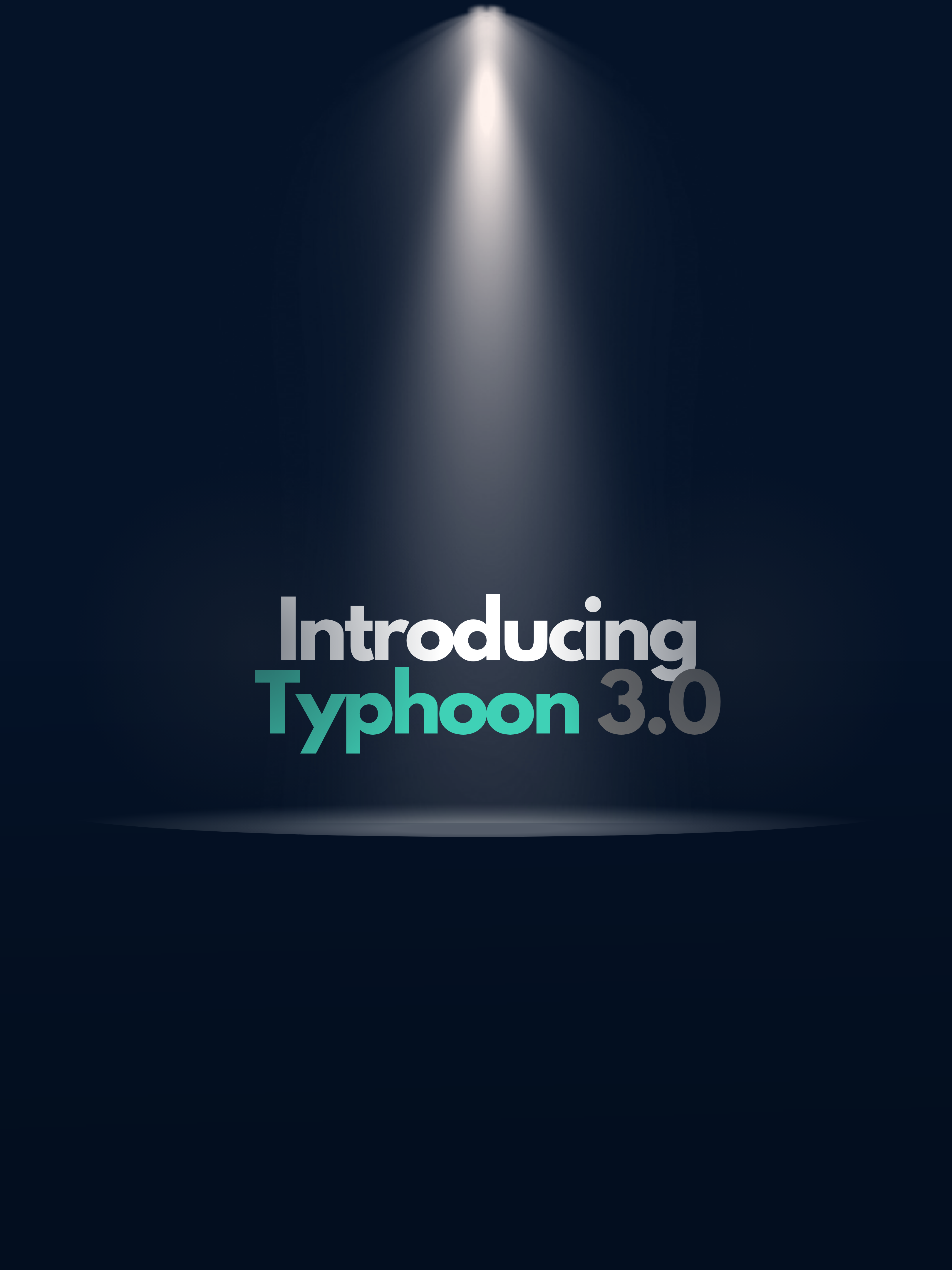
"Built by Filmmakers for Filmmakers!" Typhoon on Demand is a video-on-demand platform designed with the independent filmmaker in mind. We make it easy for filmmakers to upload and present their films and series on an uncluttered, beautiful, and fast platform, WITHOUT the hassle of negotiating complex distribution deals. "We stream the imagination, ingenuity and originally of independent filmmakers."
With a payout that will always be timely and fair, filmmakers can upload and stream their films and series, including trailers, directly to a GLOBAL audience. Founded by filmmakers, we at Typhoon know that using one's imagination, ingenuity, and originality to make a living is becoming more difficult each day.
Our job is to make it easier for you.
1
With Typhoon, filmmakers can upload directly! * You have detailed streaming metrics along with an uncomplicated automated payout system. When your film has earned money, a payout is as easy as a click of a button. You receive payouts directly to your bank or Paypal account, right from your personal portal.
2
The Typhoon approval process is straightforward. We look for technically-sound content designed to educate and entertain, content-rich in imagination, ingenuity, and originality.
3
When a film or series passes QC, it's made "live" within 1-3 days on all current Typhoon platforms and apps. These include Typhoon online, Roku, and Amazon Firestick, with more on the way.
* Coming soon features.

"Typhoon is built with a vision towards the future."
As the Typhoon community grows, we hope to one day provide funding opportunities, training, and mentorship for the next generation of independent filmmakers and seasoned professionals.
We are committed to service, integrity, and customer care here at Typhoon. We genuinely appreciate the chance to work with you. We look forward to building a positive community of passionate filmmakers.
"There’s a Typhoon coming!"
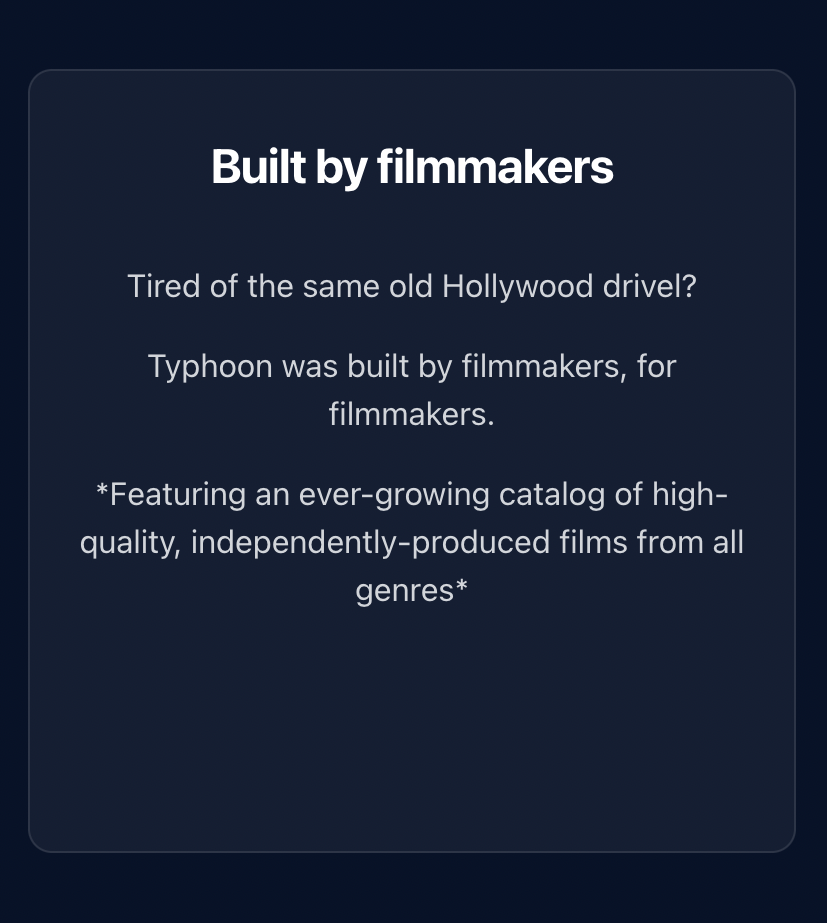
We're always looking for ways to make Typhoon better. We welcome your suggestions and ideas! Join the conversation on our Facebook group. Or feel free to drop us a line here at support@typhoonondemand.com.
Here at Typhoon, we are committed to service, integrity, and customer care. We’re only happy if you're happy. Our team truly appreciates the chance to work with you and we look forward to welcoming your project to the platform, with the promise to give it the respect it deserves.
"We stream the imagination!"

Lights, Camera... Nevada?
Will Las Vegas become the New Hollywood?

In the glitzy realm of cinema, Nevada isn't always the first place that comes to mind. However, behind the scenes, the Silver State is poised for a dramatic makeover in the film industry. A recent saga involving a proposed film tax credit bill, a tale of intrigue and ambition, hints at Nevada's potential to become a Hollywood hotspot.
In the heart of this cinematic frontier stands Nevada Senator Roberta Lange, a steadfast advocate for the independent filmmaking community. With a keen eye for storytelling and a passion for economic revitalization, Senator Lange is spearheading efforts to expand Nevada's film tax credit program, paving the way for indie filmmakers to bring their visions to life on the Silver State's silver screen. But why Nevada, you ask? Picture this: a vast canvas of landscapes, from the iconic Las Vegas Strip to the majestic peaks of the Sierra Nevada mountains. Whether you're seeking gritty urban settings or sweeping natural vistas, Nevada offers a diverse array of backdrops to suit every cinematic vision. Senator Lange's proposed film tax credit bill, set to debut in 2025, promises to level the playing field for independent filmmakers. By reducing the proposed credit amount to $95 million annually over 17 years, Lange aims to make Nevada's cinematic incentives more accessible and sustainable for indie projects of all sizes. But the story doesn't end there. In Southern Nevada, a collaboration between the Howard Hughes Corporation and Sony Pictures Entertainment is brewing, promising to usher in a new era of filmmaking excellence. Meanwhile, in Northern Nevada, a coalition of community leaders is advocating for inclusion in the cinematic renaissance, championing infrastructure and tax credits to support indie filmmakers in the region. As the curtains rise on this cinematic saga, independent filmmakers have a front-row seat to Nevada's burgeoning film industry. With its unparalleled landscapes, visionary leadership, and commitment to nurturing homegrown talent, the Silver State offers a wealth of opportunities for indie filmmakers to thrive. So, pack your camera gear, rally your crew, and join us on the journey to unlock the cinematic potential of Nevada. From the glitz and glamour of Las Vegas to the untamed beauty of the Nevada wilderness, the Silver State awaits your creative vision. Seize the opportunity, and let your cinematic dreams take flight in Nevada's boundless cinematic frontier.
Fall Delights for Filmmakers
Five Things to Look Forward to This Season
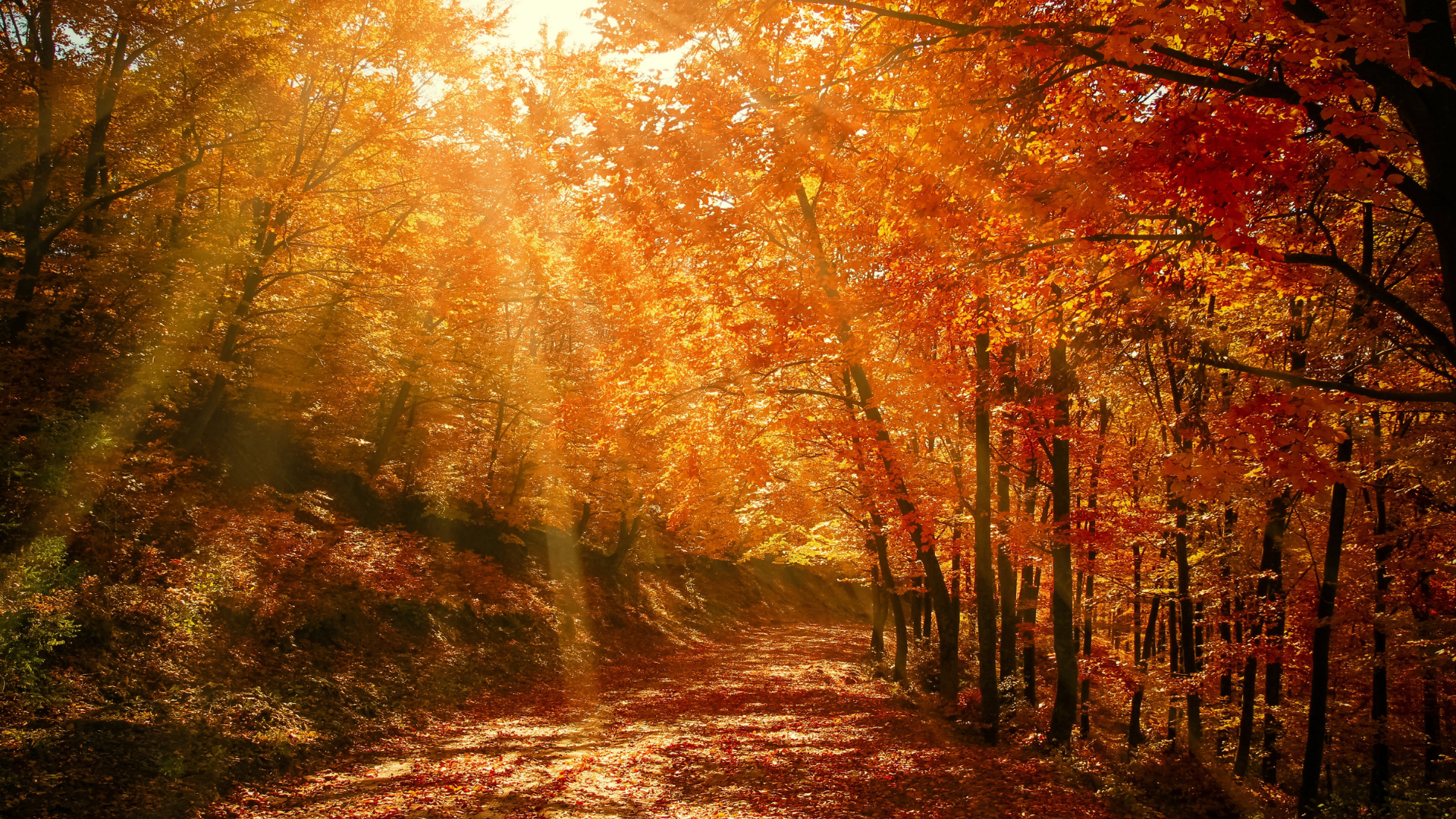
Autumn is a season cherished by many for various reasons. Some revel in the festive holidays it ushers in, while others welcome the refreshing change in weather, bid farewell to sunscreen, and embrace the crisp air.
Filmmakers, in particular, hold a special appreciation for this season, apart from the anticipation of new film releases. Let's explore some of the aspects that make fall a favorite for filmmakers.
A Feast for the Eyes
You don't need to be a filmmaker to marvel at the natural beauty that accompanies autumn. The spectacle of trees adorned with vibrant leaves is a sight to behold. During this time, even an ordinary lake or park can transform into a scene reminiscent of an oil painting.
For filmmakers, scouting ideal shooting locations is a crucial task. The allure of picturesque trees and leaf-strewn grounds can infuse scenes with natural beauty and a burst of color. Additionally, fall often brings cloudier skies and reduced sunlight, lending a gloomy and dusky ambiance to daylight scenes.
Ideal Working Conditions
Autumn marks the end of sweltering summer days, a relief for those tired of perspiring profusely with every step outdoors. Of course, this varies by location, but summer generally spells heat and discomfort for many. Filmmakers often find themselves working in non-air-conditioned environments.
Filmmaking often involves spending significant time outdoors, and even indoor shoots can generate considerable heat due to sound recording and lighting equipment. High temperatures can pose challenges to production and the comfort of the crew and cast. Many filmmakers eagerly welcome the arrival of fall, as it brings cooler temperatures and a more enjoyable working environment, making it a preferred time for shooting. Crisp weather ranks high among a filmmaker's favorite things about fall.
Halloween Magic
Among America's major holidays, Christmas and Halloween stand out for their transformative influence on homes and neighborhoods. Once October begins, you can expect to see pumpkins, scarecrows, spider webs, and other spooky decorations adorning the streets. The allure of costumes, candy bags, delectable treats, and creatively carved jack o'lanterns adds to the charm of this holiday.
Halloween also underscores our fascination with controlled fear and anxiety, where we enjoy being scared in the spirit of fun. This explains why horror movies continue to thrive in the film industry, especially in recent years. For aspiring filmmakers with a penchant for spine-chilling cinema, fall provides an ideal backdrop for planning and creating their own terrifying tales.
Film Festivals Galore
Film festivals serve as platforms for both new and seasoned filmmakers to showcase their latest projects, a culmination of their dedicated efforts. Whether they're grand events with numerous screenings or smaller gatherings in towns and colleges, film festivals are always worth exploring.
The good news is that outstanding film festivals are held throughout the year, and fall is no exception. The season kicks off with one of the biggest events of the year, the Toronto International Film Festival. No matter where you reside, there's likely a film festival happening nearby, offering a glimpse into the creativity and talent of fellow filmmakers.
Cozy Movie Nights
Filmmakers, like everyone else, have a deep appreciation for the art of cinema. While movie theaters have their charm, there's something uniquely comforting about snuggling up in your own bed or on a cozy couch to watch a captivating film. The perks include reasonably priced snacks, the convenience of pausing for a restroom break, and more.
The experience becomes even more enjoyable when it's cold outside, and you're wrapped in a warm blanket. Perhaps you have a hot beverage in hand, with the soothing sounds of rain or snow outside, and a crackling fireplace nearby – the perfect ambiance for movie watching. Undoubtedly, the conditions for watching a movie are at their finest during fall, making it one of a filmmaker's most cherished aspects of the season.
Fall holds a special allure for filmmakers, offering a range of benefits that make it a favorite season for those in the industry. The vibrant scenery, comfortable working conditions, and the spooktacular charm of Halloween all contribute to its appeal. Film festivals in autumn provide opportunities for filmmakers to showcase their work, and the cozy ambiance of movie nights during this season adds to the joy. From capturing the stunning fall landscapes to planning horror films and enjoying cinematic comforts, autumn is a time that filmmakers truly relish.
Tips on Budget Wireless Microphone Systems
by Typhoon Lance

Video production, live performances, vlogging, and content creation have all been revolutionized by the use of wireless microphones. These tiny yet powerful devices have made it possible for filmmakers, YouTubers, and performers to capture clear and crisp audio without being tethered by cables. While the advantages of wireless microphones are undeniable, budget constraints can be a significant concern, especially for small indie filmmakers. Fortunately, there are several reasonably priced wireless microphone systems available on the market today.
When it comes to choosing the perfect budget-friendly wireless microphone system, there are several key features to keep in mind...
- Sound quality: Undoubtedly, the most critical factor to consider is sound quality. Your microphone should be capable of delivering high-quality audio that is free from interference and distortion. To ensure this, opt for a microphone with good reviews and a reputation for delivering clear, crisp sound.
- Range: Assess your specific needs in terms of the microphone's range. If you're primarily vlogging, you may not require an extensive coverage area. However, if you're giving a presentation or filming a scene with significant movement, a microphone with an extended range will be essential.
- Battery life: Long battery life is crucial to ensure that your microphone doesn't die on you in the middle of an important shoot or performance. Look for a microphone with a reliable and long-lasting battery.
- Ease of use: Some wireless microphone systems can be quite complex to set up and operate. If you're a beginner, it's advisable to choose a microphone that is user-friendly and easy to get started with.
- Cost: Wireless microphones can vary widely in price, ranging from a few hundred dollars to several thousand dollars. Before you start shopping, set a budget that aligns with your financial constraints, and then search for a microphone that meets your needs within that price range.
-Hollyland Lark M1
-Saramonic Blink GO D2
-Boya Wireless BY-WM3T2-U2
-Movo Wireless
-RØDE Wireless Go II
-Comica CVM-WS50(C) & CVM-WS60
-Sennheiser XSW-D
Ultimately, the key to finding the perfect wireless microphone system lies in choosing the one that aligns with your unique requirements. Remember that your choice should prioritize sound quality, range, battery life, ease of use, and cost. By carefully considering these factors, you can select a wireless microphone system that enhances your audio recording capabilities without breaking the bank.
Most importantly, find the one that fits all your needs. - Lance.
Tips on Great Books For the Craft of Writing Screenplays
by Typhoon Lance

There are many books on screenwriting, but only some are worth your time. If you want to learn about the industry and how to craft stories, you need to read the best advice out there. Film school can be expensive, but these books are a fraction of the cost. These are five of the best screenwriting books based on experts' recommendations. You can buy some of these books to succeed. You can purchase or read none of them and still be okay. But if you're serious about learning about screenwriting, give some or all a read.
"SAVE THE CAT: The Last Book On Screenwriting You'll Ever Need." -By Blake Snyder
"Save The Cat" is a book on screenwriting that provides a scene-by-scene breakdown of a successful screenplay. The book's title refers to the idea that the protagonist must do something early to make the audience care about them, such as saving a cat.
While there is no one secret formula to a successful screenplay, Save The Cat gives screenwriters an excellent overview of potential beats throughout the script. Some writers swear by the book, while others don't want anything to do with it. Either way, whether they agree with the book's philosophy is a must-read for anyone interested in screenwriting.
"Screenplay" -By Syd Field
"Screenplay" by Syd Field is a classic screenwriting manual that writers have praised for generations. It is a barebones guide to the craft, covering everything from the importance of the first ten pages to how to write visually and adapt other works.
Field's book thesis is that all successful screenplays follow a three-act structure, each divided into two parts. The first act introduces the main characters and their conflicts, the second act shows them struggling against those conflicts, and the third act resolves the conflicts.
Field also emphasizes the importance of visual storytelling. He argues that screenwriters should think about their stories through images and scenes rather than words and dialogue. Screenplay by Syd Field is an essential read for any aspiring screenwriter. It is a comprehensive and authoritative guide to the craft that is still relevant today.
"Your Screenplay Sucks!" -By William A. Akers
The book "Your Screenplay Sucks!" Akers offers writers a checklist of 100 questions to answer before considering their script 'finished. The author uses examples from other writers on how they solved their script problems. Use this book to guide your rewriting process.
"Lew Hunter's Screenwriting 434" -By Lew Hunter
"Lew Hunter's Screenwriting 434" is a comprehensive guide to the screenwriting process based on the legendary graduate-level seminar at the University of California Los Angeles. The book guides readers through every process step, from developing ideas to writing and rewriting their original script.
Each chapter of the book focuses on a different aspect of screenwriting; throughout the book, Hunter provides examples from successful screenplays and exercises to help readers develop their skills. He also offers candid advice on the screenwriting industry and how to navigate it successfully. Lew Hunter's Screenwriting 434 is an essential resource for anyone who wants to learn how to write screenplays. It is a clear, concise, and informative book that covers every aspect of the screenwriting process.
"Write Screenplays That Sell" -By Hal Ackerman
UCLA professor and co-head of the screenwriting program Hal Ackerman taught hundreds of aspiring screenwriting students. Many of Ackerman's students work in the industry with legends like Steven Spielberg and Ridley Scott and in films starring Tom Hanks, Diane Lane, and others.
That's it for today - Lance.
Typhoon Lance,
AKA The one-man band…

"To be effective, an army relies on good and plentiful food." That little beauty is a quote from Napoleon Bonaparte; yep, that Napoleon. The short French guy that almost took over the world.
There are tons of films, books, and articles about the art of filmmaking, the gear used, and the business aspect of the film industry. Today, I will write about what is dear to me. Food. Yep, food. If you want to make an incredible indie film, feed your crew. Don't hold back on the food. I'm talking food for the sound guy, the cameraman, the lonely PA, food for all, Not just a bunch of crap from the dollar menu, but good food. Their hard work for little pay, if any, will make your dream come true. You did the job writing the film, raising the cash, getting the actors, and scoring locations; now, make sure the crew gets a good meal. Okay, I know, money is tight, but if you have to get the shot, a full belly will make it much more manageable.
Here are just some quick pointers and tips if you're lucky enough to have a crew-
Like I said earlier, stay off the dollar menu. Everyone knows what you're up to. We're all broke in the indie world.
Don't secretly pick out the meat from a dish; then try to serve it to a vegetarian crew member.
Cough drops and Arco coffee is not a craft service. Plus, craft service on a three thousand dollar budget? Come at least some candy with name recognition and beef jerky in the van with an ice chest full of cold drinks. Oh, and some variety of chips, not just your favorite.
If you're making sandwiches? Make a sandwich. But make an authentic sandwich with meat, cheese, lettuce, or whatever. We've all had the only mustard or catsup sandwich, period; starve yourself, but feed your crew.
Please don't wait to feed the crew till they're starving. Stop and eat. You want to avoid ending up like some poor Captain in a British Naval film. Hungry people have overthrown governments, much less film sets.
Eat together. Small and micro-budget indie films have no room for a caste system. Crew, talent and the guy you found just that day to unload the van are in this boat together. And let them eat, don't try to impress them with your creativity by hogging the conversation.
But most of all, let them know that you care enough to make sure they get something good to eat. Ask them what they like, and see if you can score it. They are helping you for little or no pay. At least you can ensure they have something in their tummy.
That's it for today - Lance.
TIPS on Buying Handheld Field Recorders
by Typhoon Lance

When it comes to capturing high-quality audio on location, a good field audio gear setup is an absolute must. Whether you're a filmmaker, documentarian, sound engineer, or simply someone passionate about recording audio in the field, choosing the right field recorder is crucial. Your selection should align with your specific needs, budget constraints, and personal preferences. Let's delve deeper into the essential factors to consider when picking a field recorder for your next shoot.
First and foremost, it's essential to establish a budget before embarking on your field recorder hunt. Field recorders come in a wide price range, spanning from a few hundred dollars to several thousand dollars. By setting a budget, you ensure that you spend your money wisely and avoid overspending on features you may not need.
Next, think about the versatility you require from your field recorder. If you anticipate working in various shooting environments and situations, it's wise to look for a recorder with multiple input and output options, as well as various recording modes. This flexibility will enable you to adapt to different scenarios seamlessly.
Audio quality is paramount in the world of field recording. It's imperative to research and seek out models with high-quality preamps and converters that fit within your budget. Superior audio quality can make a substantial difference in the final product of your recording, so this is an area where it's often worth investing a bit more.
Furthermore, consider the user-friendliness of the field recorder, especially if you're new to field recording. Look for models with a simple and intuitive design that won't overwhelm you with complex features and settings. A recorder that you can easily navigate and operate will save you time and ensure a smoother recording experience.
For a more comprehensive look at the best handheld field recorders available in 2023, I recommend checking out Lewis McGregor's article titled "The Best Handheld Field Recorders in 2023" on IndieTips. This article provides valuable insights into specific models, their specifications, and their prices, which can be a helpful resource as you narrow down your options.
In conclusion, selecting the right field recorder involves careful consideration of your budget, recording needs, audio quality requirements, and ease of use preferences. With these factors in mind, you can make an informed choice that will enhance your audio recording capabilities and help you capture pristine sound on location.
- Field recorders can range in price from a few hundred dollars to several thousand dollars. Set a budget before you start shopping. Stay under budget so that you spend your money wisely.
- Get what you need; if you need one that can handle a wide range of situations, look for one with multiple input and output options and various recording modes.
- Audio quality is an audio quality essential. Do your homework and look for models with the best with high-quality preamps and converters that you can afford.
- Some field recorders are easier to use than others. If you're new to field recording, look for a model with a simple and intuitive design.
Once you've considered these factors, you can select a field recorder that best suits your audio recording needs.
Please check out Lewis McGregor's article, "The Best Handheld Field Recorders in 2023" at IndieTips. It has models, specs, and prices.
Typhoon Lance,
AKA The one-man band…
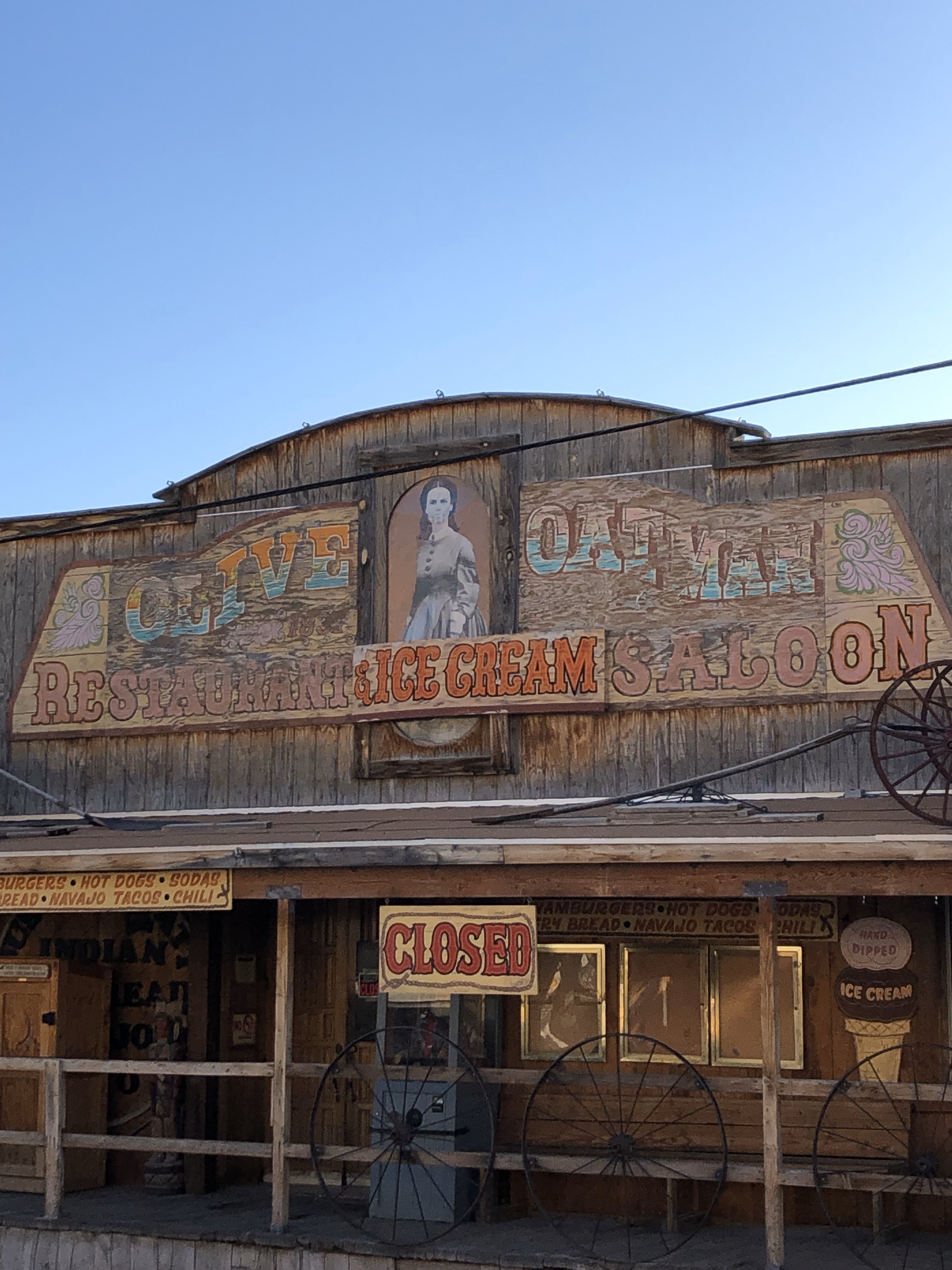
Okay, it's time for a break! Sometimes you have to have one. I headed to AZ to see my brother and found a place that time had forgotten. And of course, it's got a film history, or I would be talking about something else! It's Oatman, Arizona, located off Highway 40, right on the Oatman Highway. In other words, once you hit Mojave City, head east on Highway 40, and if you hit Kingman, you've missed it.
What a history this old mining town has. Rumor is that The old Oatman Hotel is famous for having the honeymoon suite where Clark
Gable and Carole Lombard spent their honeymoon night in 1939! You can go upstairs and check it all out for a small donation. But,
again, it’s a rumor.
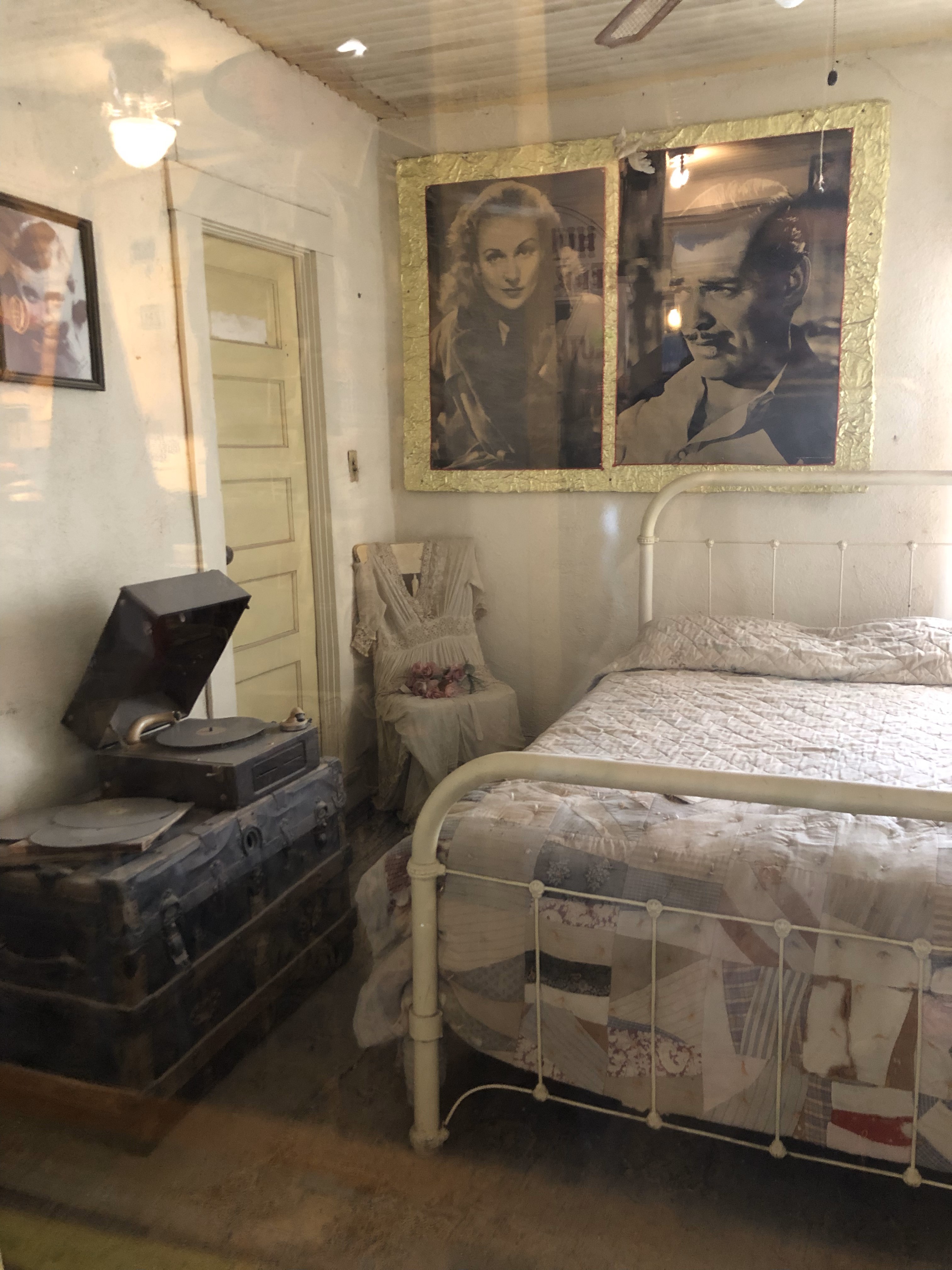
- How the West Was Won (1962) (Old Schoolhouse)
- Roadhouse 66 (1984)
- Edge of Eternity (1959)
- Thunder Run (1985)
- Foxfire (1955)
- Through the Magic Pyramid (1981 TV Movie)
- Route 66 (I) (2019)
- Killer Holiday (2013)
Driving on Highway Oatman as you get near the town, you'll be on the road used in some films. Added plus, it's part of the famous
Route 66! Be sure to check out the staged gunfight on the weekends. All proceeds go to charities.
But watch out for the donkeys! Trust me, you will see what I am talking about when you get there. Oatman might be a location for your
next film or a fun way to spend a day. GO!
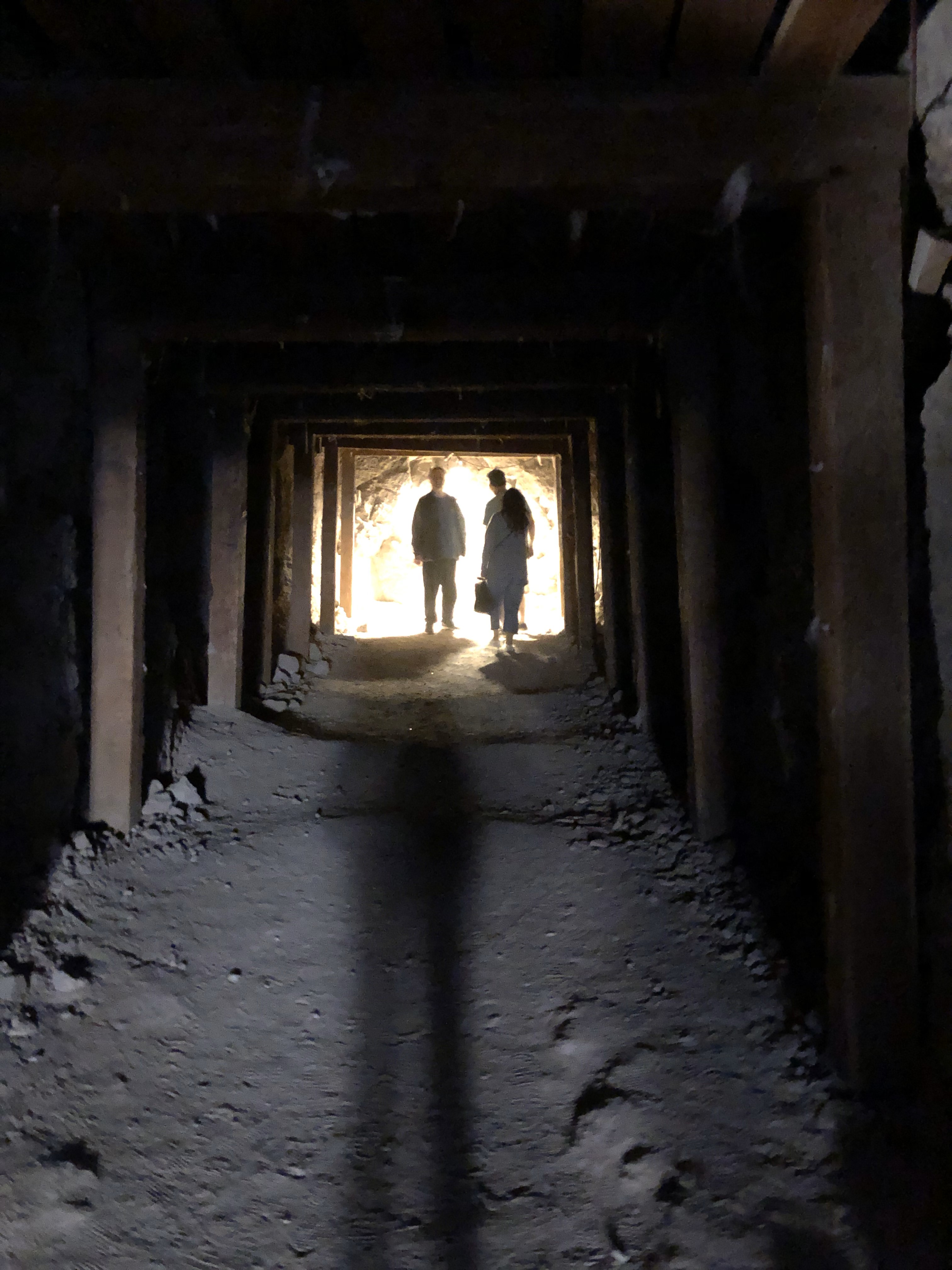
Oatman, Arizona, nestled off Highway 40 on the historic Oatman Highway, is a remarkable and quirky town that stands as a living relic of the Old West. What makes Oatman truly fascinating is its unique population—wild burros that roam freely through the streets.
Originally a gold mining town, Oatman thrived during the early 1900s. However, when the gold mines closed down, the town faced abandonment. Today, Oatman has reinvented itself as a tourist attraction, offering visitors a glimpse into the past.
The town's streets are lined with rustic wooden buildings, saloons, and shops that evoke the atmosphere of the Gold Rush era. Yet, what truly steals the show are the burros. These descendants of pack animals left behind by miners now roam the town, mingling with tourists and occasionally begging for treats. They have become beloved mascots of Oatman, and you can even purchase special burro food to feed them.
Oatman hosts various Wild West events, including gunfight reenactments, and visitors can experience a slice of the Old West while taking in its stunning desert surroundings. The drive along Oatman Highway, also known as Route 66, adds to the charm, making Oatman, Arizona, a must-visit destination for history buffs and anyone seeking an offbeat adventure in the heart of the American Southwest.
Be sure to check out Bernardo Pacini's article for Travel In USA at the link below. It's got all the info on the great little old town
of Oatman, AZ.
Mastering the Art of Low-Budget Filmmaking:
Tips and Tricks for Independent Filmmakers

Independent filmmakers have always been the vanguards of creativity and innovation in the world of cinema. With the advent of digital technology and the democratization of filmmaking tools, the indie film scene has exploded in recent years. This blog post is a treasure trove of valuable insights, tips, and tricks to help independent filmmakers navigate the challenges of low-budget filmmaking and bring their cinematic visions to life.
1. Scriptwriting and Storytelling
Every great film starts with a compelling story. As an independent filmmaker, your screenplay is the foundation of your project. Make sure it's well-written, engaging, and achievable within your budget constraints. Keep your story simple yet powerful, focusing on character development and relatable themes.
2. Budgeting and Fundraising
Creating a realistic budget is crucial for independent filmmakers. Research every aspect of your production, from equipment and crew to locations and post-production costs. Consider crowdfunding, grants, and sponsorship opportunities to secure funding for your project. Be transparent with your backers and provide enticing rewards to encourage support.
3. Casting and Crew Selection
Building a talented and passionate team is essential. Network with local actors and crew members, and consider collaborations with emerging talents. Look for individuals who share your vision and are willing to work within your budget. Offer deferred payments or profit-sharing arrangements to attract top-notch talent.
4. Location Scouting and Permits
Scouting the right locations can significantly impact the look and feel of your film. Seek out unique and affordable settings that align with your script. Be diligent in obtaining the necessary permits and permissions to avoid legal issues down the road. Consider negotiating location fees or finding free alternatives.
5. Equipment and Technology
While you may not have access to the latest Hollywood gear, there are budget-friendly alternatives that can produce professional results. Rent equipment or utilize what you already have, focusing on essential items like cameras, lenses, and sound equipment. Experiment with DIY solutions and creative lighting techniques to enhance your shots.
6. Production Design and Costume
Don't underestimate the power of production design and costume choices. Resourcefulness is key here. Utilize thrift stores, local artists, and DIY crafts to create visually striking sets and costumes that match your story's tone and period.
7. Production Schedule and Time Management
Efficient time management is vital to stay within budget. Create a detailed production schedule, allowing for flexibility in case of unexpected delays. Consider shorter shoot days and break your project into manageable chunks to minimize fatigue and maximize creativity.
8. Post-Production and Editing
Post-production can make or break your film. Invest in quality editing software, and learn the art of effective editing. Experiment with color grading and sound design to enhance your storytelling. Seek feedback from peers and mentors to refine your work.
9. Marketing and Distribution
Plan your marketing strategy early on. Utilize social media, film festivals, and online platforms to create buzz around your film. Explore distribution options such as self-distribution, streaming platforms, or partnerships with indie distributors.
10. Perseverance and Networking
Independent filmmaking can be challenging, but persistence is key. Build relationships with fellow filmmakers and industry professionals. Attend film festivals and networking events to showcase your work and make valuable connections.
Independent filmmaking is a labor of love, driven by passion and creativity rather than a massive budget. By mastering the art of low-budget filmmaking and implementing these tips and tricks, you can overcome obstacles and bring your cinematic vision to life. Remember, great stories and authentic storytelling are the heart and soul of independent cinema, and they can shine brightly, even on a shoestring budget. So, go out there and create your masterpiece!
The Art of Independent Filmmaking:
From Passion to Projection

When we think of cinema, we often envision the glitz and glamour of Hollywood, with its blockbuster budgets, A-list stars, and eye-popping special effects. While these big-budget productions have their place in the world of entertainment, there's another realm of filmmaking that deserves our attention and admiration – independent filmmaking. In this blog post, we'll take a deep dive into the world of independent cinema, exploring its origins, unique characteristics, and the passionate individuals who bring their visions to life against all odds.
A Glimpse into Independent Cinema's Origins
Independent filmmaking, often referred to as "indie filmmaking," traces its roots back to the early days of cinema. In fact, some of the pioneers of filmmaking, like Georges Méliès and the Lumière brothers, were essentially independent filmmakers. Back then, the term "independent" didn't carry the same connotations it does today; it simply meant making films outside the control of major studios.
The modern indie film movement truly began to take shape in the 1950s and 1960s, with the rise of filmmakers like John Cassavetes, who embraced a more personal and unconventional approach to storytelling. These early pioneers laid the foundation for what would become a thriving and diverse indie film landscape.
The Indie Filmmaker's Toolkit
One of the defining characteristics of independent filmmakers is their ability to make the most of limited resources. While Hollywood productions have budgets that can run into the hundreds of millions of dollars, indie filmmakers often work with a fraction of that amount. This scarcity of funds necessitates creativity and resourcefulness.
Here are some common elements of an indie filmmaker's toolkit:
Passion: Independent filmmakers are driven by a deep passion for storytelling. They often take on multiple roles in their productions, from writing and directing to producing and editing, fueled by their unwavering dedication to their craft.
Low Budgets: Limited budgets mean making do with what's available. This can lead to inventive solutions, such as using natural lighting, relying on practical effects, or enlisting the help of talented friends and family.
Flexibility: Indie filmmakers must be flexible and adaptable. Sudden changes in weather, equipment malfunctions, or scheduling conflicts can throw a wrench into their plans. Being able to pivot and problem-solve on the spot is a valuable skill.
Risk-Taking: Independent filmmakers often take risks and explore unconventional narratives. They're not bound by the commercial pressures that constrain many Hollywood productions, allowing for more daring and thought-provoking storytelling.
Resourcefulness: From crowdfunding campaigns to guerrilla marketing tactics, indie filmmakers are resourceful in finding ways to fund their projects and get them in front of audiences.
Notable Indie Films that Made an Impact
While there are countless indie gems deserving of recognition, let's take a moment to celebrate a few that have made a significant impact:
"Clerks" (1994) - Directed by Kevin Smith: Shot on a shoestring budget in a convenience store, "Clerks" became a cult hit and launched Kevin Smith's career as a filmmaker.
"Little Miss Sunshine" (2006) - Directed by Jonathan Dayton and Valerie Faris: This heartwarming and quirky family road trip film charmed audiences worldwide and received critical acclaim.
"Moonlight" (2016) - Directed by Barry Jenkins: This powerful and introspective coming-of-age drama won the Academy Award for Best Picture, proving that indie films could compete on the grandest stage.
"The Blair Witch Project" (1999) - Directed by Daniel Myrick and Eduardo Sánchez: A pioneer in the found footage genre, this film used a minimalistic approach to terrify audiences and became a cultural phenomenon.
The Future of Independent Filmmaking
The landscape of independent filmmaking is continually evolving, thanks in part to advancements in technology and changes in distribution methods. The internet has democratized the filmmaking process, making it easier for aspiring filmmakers to produce and share their work with a global audience.
Streaming platforms like Netflix, Amazon Prime, and Hulu have become major players in the indie film scene, providing a platform for unique and diverse voices. Film festivals dedicated to independent cinema, such as Sundance and Cannes, continue to discover and champion emerging talent.
In recent years, crowdfunding platforms like Kickstarter and Indiegogo have empowered indie filmmakers to raise funds directly from their audiences, giving them greater creative control and independence from traditional financiers.
Independent filmmaking is a testament to the enduring power of storytelling. It's a realm where passion, creativity, and determination take center stage, and where budgets, while limited, do not limit artistic expression. As we continue to explore the world of cinema, let's not forget to celebrate and support the indie filmmakers who, against all odds, bring their visions to life, enriching our cinematic experience with their unique stories and perspectives. The world of independent cinema is vast and ever-evolving, offering a treasure trove of hidden gems waiting to be discovered by those willing to venture beyond the multiplex. So, the next time you're searching for a movie to watch, consider exploring the world of indie filmmaking—you might just stumble upon a cinematic masterpiece that leaves a lasting impression.
Hidden Gems:
Unearthing Forgotten Independent Films

In the fast-paced world of cinema, where blockbusters dominate box offices and streaming platforms offer an endless array of choices, it's easy for smaller, independent films to get lost in the shuffle. Yet, within the vast sea of movies, there are hidden gems that have been overshadowed by the glitz and glamour of Hollywood but deserve to be rediscovered. These films may not have received the recognition they initially deserved, but they have left a lasting impact on the indie film landscape. Join us on a journey into the archives as we unearth forgotten independent films and explore why they deserve a second look.
The Power of Independent Filmmaking
Before we dive into our list of hidden gems, let's take a moment to appreciate the power and significance of independent filmmaking. Independent cinema has long been a breeding ground for creativity, innovation, and storytelling that often challenges the conventions of mainstream Hollywood. With limited budgets and resources, independent filmmakers rely on their passion and ingenuity to bring their visions to life. This results in films that are often daring, unconventional, and deeply personal.
The Forgotten Gems:
"Primer" (2004) - Directed by Shane Carruth
"Primer" is a time-travel masterpiece that may have left audiences scratching their heads upon its release. With its intricate narrative and minimalistic approach, Shane Carruth's debut film is a prime example of how independent cinema can push the boundaries of storytelling.
"The Fall" (2006) - Directed by Tarsem Singh
Tarsem Singh's visually stunning epic "The Fall" is a feast for the eyes. This hidden gem combines breathtaking cinematography with a heartfelt story, proving that independent cinema can deliver both style and substance.
"In the Mood for Love" (2000) - Directed by Wong Kar-wai
Although Wong Kar-wai is a celebrated filmmaker, "In the Mood for Love" remains a hidden gem for many. This evocative exploration of love and longing in 1960s Hong Kong is a testament to the emotional depth that independent cinema can achieve.
"Pi" (1998) - Directed by Darren Aronofsky
Before Darren Aronofsky became a household name, he crafted the mind-bending thriller "Pi." This low-budget masterpiece showcases the director's signature style and serves as a reminder of how independent films can challenge and captivate audiences.
"Ghost World" (2001) - Directed by Terry Zwigoff
"Ghost World" is a coming-of-age classic that may have flown under the radar for many. Based on Daniel Clowes' graphic novel, the film offers a unique and poignant perspective on teenage life, friendship, and identity.
Why These Films Deserve a Second Look:
These hidden gems of independent cinema continue to resonate with audiences for several reasons...
Innovation: Independent films often experiment with storytelling techniques, pushing the boundaries of what's possible in cinema. "Primer" and "Pi" are perfect examples of this, offering narratives that challenge the viewer's intellect.
Visual Excellence: "The Fall" and "In the Mood for Love" showcase the artistic prowess of independent filmmakers. They prove that stunning visuals can be achieved even with limited resources.
Emotional Depth: "Ghost World" and "In the Mood for Love" delve deep into the complexities of human emotions, offering profound and relatable experiences.
Cult Followings: Over the years, these films have developed passionate cult followings, demonstrating their lasting impact on the indie film landscape.
Directorial Talents: Many of these films introduced talented directors who have gone on to make significant contributions to cinema. Their early works are a testament to their potential and vision.
In the world of independent cinema, hidden gems abound, waiting to be discovered by those willing to venture beyond mainstream offerings. These forgotten films not only offer a fresh perspective but also remind
us of the enduring power of independent storytelling. So, the next time you're scrolling through your streaming platform or perusing your local video store (if you're lucky enough to have one), take a moment to
seek out these hidden gems and experience the magic of independent filmmaking at its finest. After all, some treasures are best discovered in the shadows.
New This Week On Typhoon!
Fugued Up

In this dark comedy, we follow the journey of a man who emerges from a coma with a blank slate, only to discover disturbing hints that he might be a serial killer. As he attempts to reconstruct his life, hilariously stumbling through the process, he unravels a twisted mystery that keeps the audience both laughing and on the edge of their seats."
The Manure Film Project: A Crappy Documentary with Absolutely No Budget
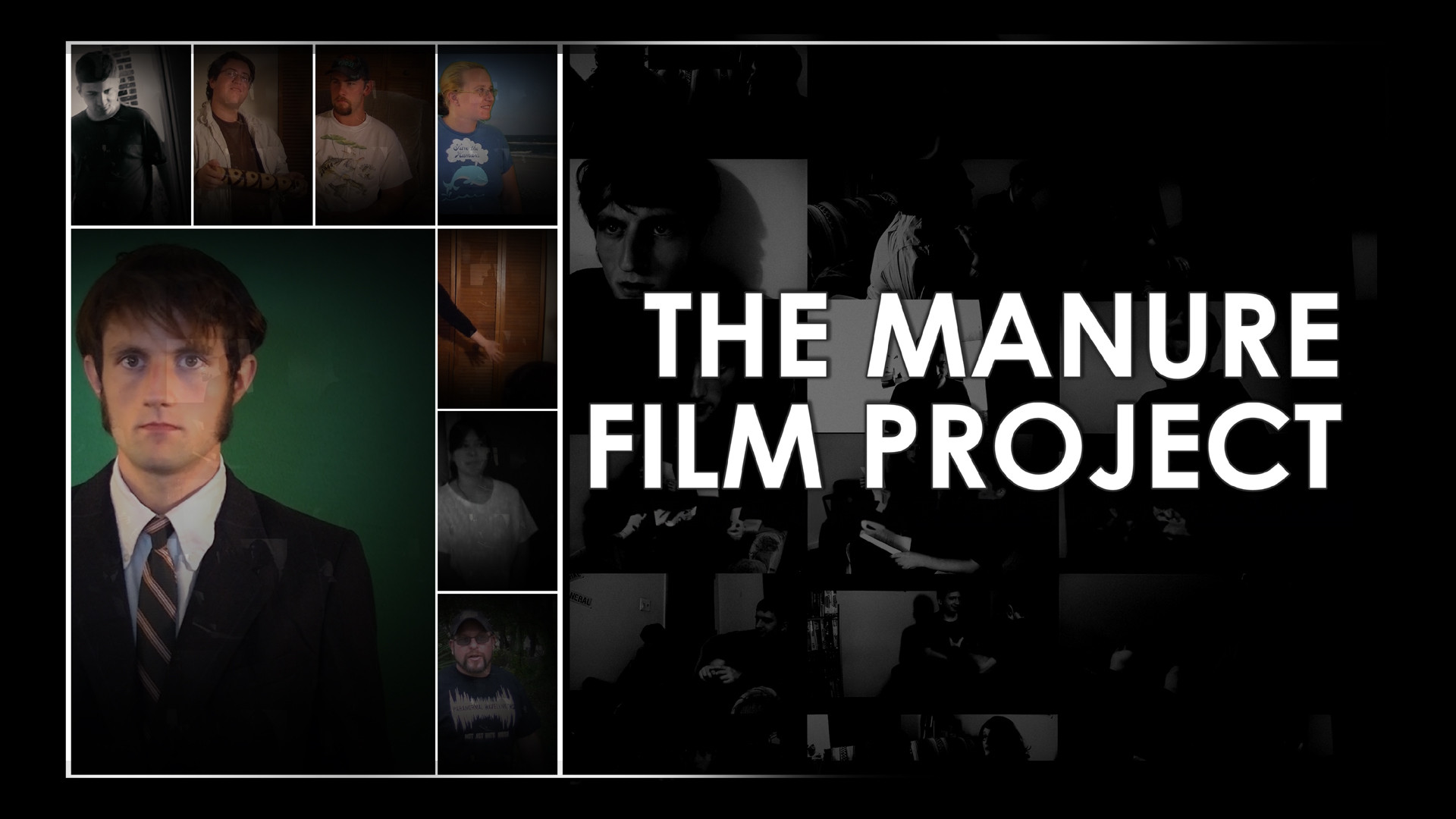
Mark Daniels, a student filmmaker, faces an unexpected challenge when he's tasked with creating a short film for his film-making class in just two weeks. In a bid to leave a lasting impression on his teacher, he ambitiously embarks on the journey to produce a feature-length documentary film within this tight deadline. The race against time unfolds as he endeavors to achieve the seemingly impossible.
British Made

After serving time in prison for his association with a nationalist gang, a man reenters society only to delve into the dark secrets of his troubled past. As he unravels the truth, he finds himself entangled in a web of violence, feeling betrayed by friends, family, and even his own country. The journey to redemption takes a treacherous and haunting turn, where loyalties are tested, and the past refuses to let go.
"Built by Filmmakers for Filmmakers!" Typhoon on Demand is a video-on-demand platform designed with the independent filmmaker in mind. We make it easy for filmmakers to upload and present their films and series on an uncluttered, beautiful, and fast platform, WITHOUT the hassle of negotiating complex distribution deals. "We stream the imagination, ingenuity and originally of independent filmmakers."
We're always looking for ways to make Typhoon better. We welcome your suggestions and ideas! Join the conversation on our Facebook group. Or feel free to drop us a line here at support@typhoonondemand.com.
Here at Typhoon, we are committed to service, integrity, and customer care. We’re only happy if you're happy. Our team truly appreciates the chance to work with you and we look forward to welcoming your project to the platform, with the promise to give it the respect it deserves. "We stream the imagination!"
Why is community so important for indie filmmakers?
The Strength of Unity: Embrace the Filmmaking Community

For independent filmmakers, the filmmaking community is more than just a network; it's a lifeline. In a world where creativity knows no bounds, connecting with like-minded individuals who share your passion can be a game-changer. That's where TyphoonOnDemand's Facebook community comes into play. Join us to experience the incredible benefits of collaboration, support, and growth that our community offers.
For independent filmmakers, community matters. Join the dynamic world of TyphoonOnDemand's Facebook community to experience the
benefits of collaboration. Connect with like-minded creatives, share knowledge, and access valuable resources. Amplify your work's
visibility, receive support, and contribute to the thriving indie film movement. Embrace the strength of unity and elevate your
filmmaking journey today.
Click HERE to join us on Facebook and be part of the journey!
Why Does Community Matter for Filmmakers?
Filmmaking is a complex and multifaceted art form that often requires a village. From scriptwriting and casting to cinematography and post-production, every stage benefits from different perspectives, skills, and expertise. This is where the power of community shines. When you connect with fellow filmmakers, you unlock a world of possibilities.
Collaboration and Knowledge Sharing
Our TyphoonOnDemand Facebook community is a dynamic hub where filmmakers of all levels come together. Whether you're a seasoned pro or just starting your journey, you'll find a supportive environment where knowledge sharing is encouraged. Discuss the latest filmmaking techniques, seek advice on overcoming challenges, and share your experiences. Together, we grow and evolve as filmmakers.
Access to Valuable Resources
One of the biggest advantages of being part of a filmmaking community is access to valuable resources. From equipment recommendations to funding opportunities and industry insights, our community members are a treasure trove of information. Don't miss out on the chance to expand your toolkit and stay informed about the ever-changing world of indie filmmaking.
Amplify Your Work's Visibility
In the vast landscape of independent cinema, visibility is key. Our community offers a platform to showcase your work, whether it's a short film, a documentary, or a behind-the-scenes look at your creative process. Gain exposure, receive constructive feedback, and connect with potential collaborators and audiences who appreciate your unique perspective.
Support and Empowerment
Filmmaking can be a challenging and sometimes lonely endeavor. Being part of a community provides the support and encouragement you need to keep pushing forward. Share your successes, vent your frustrations, and celebrate each other's achievements. Together, we empower one another to pursue our creative dreams relentlessly.
Join the TyphoonOnDemand Filmmaking Community
Embrace the strength of unity and elevate your filmmaking journey today. Join us on Facebook and become an integral part of our filmmaking community. Together, we'll make waves in the indie film movement, inspire one another, and create cinematic magic that leaves a lasting impact. Don't miss out on this incredible opportunity to connect, collaborate, and thrive in the world of independent filmmaking. Join us, and let's write the next chapter of your filmmaking success story!
Crafting Compelling Stories:
A Guide to Script Writing for Independent Filmmakers

Script writing is the backbone of any successful film, and for independent filmmakers, it's often the first step in bringing their creative vision to life. Whether you're an aspiring indie filmmaker or a seasoned pro, the art of script writing is a skill worth mastering. In this article, we'll delve into the essential aspects of script writing tailored specifically for independent filmmakers.
1. Start with a Clear Premise
Every great film begins with a clear and captivating premise. Your premise is the seed from which your story grows. It should be concise and compelling, setting the stage for your entire script. Take the time to brainstorm and refine your premise until it excites and intrigues you.
2. Flesh Out Your Characters
Memorable characters are at the heart of every successful screenplay. Spend time developing the backstory, motivations, and unique traits of your characters. Give them depth, flaws, and relatable qualities that will resonate with your audience. A well-written character can elevate an entire film.
3. Structure Your Story
For independent filmmakers, understanding story structure is crucial. The three-act structure is a classic template that works well for many films. It consists of the setup, confrontation, and resolution. However, don't be afraid to experiment with non-linear storytelling or unique structures that suit your narrative.
4. Write Engaging Dialogue
Dialogue is where your characters come to life. Focus on crafting natural and engaging conversations that reveal character traits and drive the plot forward. Avoid excessive exposition and aim for subtext that keeps the audience engaged and thinking.
55. Show, Don't Tell
In the visual medium of film, it's often more powerful to show emotions and actions rather than explicitly telling the audience what's happening. Use visual cues, actions, and facial expressions to convey emotions and story elements whenever possible.
6. Edit and Rewrite
The first draft of your script is just the beginning. Expect to go through multiple rounds of editing and rewriting. Don't be too attached to your initial ideas; be open to improvements and changes that make your script stronger.
7. Consider Budget Constraints
As an independent filmmaker, it's essential to keep budget constraints in mind while writing your script. Think about locations, the number of actors, special effects, and any other elements that may affect production costs. Creativity can flourish within limitations, so embrace the challenge of making the most of your resources.
8. Seek Feedback
Don't hesitate to share your script with trusted friends, fellow filmmakers, or script consultants. Constructive feedback can help you identify strengths and weaknesses in your screenplay, leading to improvements.
9. Network and Collaborate
Independent filmmaking often thrives on collaboration. Build relationships with actors, cinematographers, and other professionals who share your passion. Collaborative input can enhance your script and bring fresh perspectives to your project.
10. Stay True to Your Vision
While it's essential to be open to feedback and collaboration, remember that your script is an expression of your creative vision. Don't compromise your artistic integrity, but be flexible in finding solutions that align with your vision and budget.
Script writing is an art that requires practice, patience, and dedication. Independent filmmakers have the unique opportunity to tell their stories in ways that resonate with audiences on a personal level. By mastering the craft of script writing and combining it with passion and perseverance, indie filmmakers can create films that leave a lasting impact. So, pick up your pen (or keyboard) and start crafting your next cinematic masterpiece!
Interested in Film Festivals?
Silicon Valley Queer Film Festival, Chicago Women Film Fest, and Real to Reel International Film Festival,

these are just some of the thousands of upcoming festivals you can learn all about and even easily apply to using filmfreeway.com.
Check out their Search Tool to find creative indie events that spark your imagination. If you want to submit your own film, check out this link to see how it works! Attending events like these are so important and beneficial for filmmakers. Meet like-minded creatives, form friendships, partnerships, gain access to resources, and let the energy revive your creative juices!
If you're passionate about filmmaking and seeking opportunities to showcase your work or simply immerse yourself in the world of cinema, the realm of film festivals offers a captivating journey. There's a multitude of film festivals happening worldwide, each with its unique focus and charm. Whether you're a filmmaker or an enthusiastic cinephile, these events provide an incredible platform for networking, inspiration, and creativity.
**Exploring Film Festivals**
Silicon Valley Queer Film Festival, Chicago Women Film Fest, and Real to Reel International Film Festival are just a few examples of the vibrant film festivals that await your discovery. These festivals celebrate diverse voices, unique perspectives, and the art of storytelling through cinema. They offer a window into the world of independent filmmaking, showcasing innovative and thought-provoking works.
**Discovering FilmFreeway**
To navigate this exciting world of film festivals and discover events that resonate with your interests, FilmFreeway is your go-to resource. Their user-friendly Search Tool empowers you to explore a vast array of creative indie events, spanning various genres and themes. Whether you're into documentaries, animation, LGBTQ+ cinema, or any other niche, FilmFreeway makes it easy to find festivals that ignite your imagination.
**Submitting Your Film**
If you're a filmmaker eager to share your work with the world, FilmFreeway offers a straightforward submission process. You can start your journey by clicking on [this link](https://filmfreeway.com/submit) to learn more about how the submission process works. It's a fantastic opportunity to have your film screened, gain exposure, and receive valuable feedback from audiences and industry professionals.
**The Power of Film Festivals**
Attending film festivals goes beyond the mere appreciation of cinema. It's a transformative experience that can have a profound impact on your filmmaking career. These events provide a fertile ground for meeting like-minded creatives, forming friendships, and forging partnerships that can shape the trajectory of your projects. You gain access to invaluable resources, industry insights, and the energy of the festival circuit that can revive your creative juices and inspire your next cinematic masterpiece.
In conclusion, if you have a passion for film and storytelling, film festivals offer a world of possibilities. Whether you're a filmmaker looking to submit your work or simply a film enthusiast eager to immerse yourself in the world of indie cinema, FilmFreeway is your gateway to discovering and participating in these remarkable events. We look forward to seeing YOU at the next indie film festival, where creativity and inspiration collide!
New This Week On Typhoon!
Toy Gun

"Toy Gun" is an uproarious dark comedy that follows a captivating character on a quest to reveal the depths of despair caused by his ex-wife. In a brilliantly comedic twist, he embarks on a poorly thought-out endeavor to make a statement, but little does he know that an unexpected source of wisdom awaits him next door. Enter his reformed ex-con neighbor, whose sage advice proves to be the catalyst for his personal growth and newfound self-worth, leading him on a hilarious and heartwarming journey of moving on from the past.
Dead Getaway

Embark on an idyllic dream vacation that quickly transforms into a heart-pounding nightmare as a secluded resort island falls prey to an enigmatic contagion, unleashing a horrifying transformation in ordinary people, turning them into savage, bloodthirsty killing machines. Trapped and isolated, a tight-knit group of tourists finds themselves facing an unimaginable battle for survival, pitted against an overwhelming horde of the infected. Can they muster the courage and resourcefulness to fight back against the relentless onslaught and escape the clutches of this nightmarish ordeal? Brace yourself for a gripping tale of suspense, bravery, and survival against all odds.
Words

In a captivating exploration of a generation shaped by texts, tweets, memes, and irony, "Words" delves into the profound impact our words carry amidst the vibrant and ever-changing backdrop of New York City. In this thought-provoking journey, the film delves deep into the intricate web of gender and identity, illuminating how individuals courageously navigate their paths through this dynamic urban landscape. Unveiling the raw emotions and complexities of modern existence, "Words" unveils a powerful narrative that challenges us to reflect on the true weight and significance of the words we use to shape our lives in this rapidly evolving world.
"Built by Filmmakers for Filmmakers!" Typhoon on Demand is a video-on-demand platform designed with the independent filmmaker in mind. We make it easy for filmmakers to upload and present their films and series on an uncluttered, beautiful, and fast platform, WITHOUT the hassle of negotiating complex distribution deals. "We stream the imagination, ingenuity and originally of independent filmmakers."
We're always looking for ways to make Typhoon better. We welcome your suggestions and ideas! Join the conversation on our Facebook group. Or feel free to drop us a line here at support@typhoonondemand.com.
Here at Typhoon, we are committed to service, integrity, and customer care. We’re only happy if you're happy. Our team truly appreciates the chance to work with you and we look forward to welcoming your project to the platform, with the promise to give it the respect it deserves. "We stream the imagination!"
Curious About Cameras?
Rtings.com Reviews the Top 5 Cameras for Filmmaking

Investing in a mirrorless or DSLR camera is a viable option for amateur filmmakers seeking high-quality videos without breaking the bank. Many stills and hybrid cameras offer impressive internal video recording capabilities, various codecs, and picture profiles for creative control from shooting to editing.
Are you curious about cameras for filmmaking? Making the right camera choice can significantly impact the quality of your videos, and it doesn't always have to mean breaking the bank. Many mirrorless and DSLR cameras offer impressive video recording capabilities, giving amateur filmmakers the tools they need to create high-quality content. When selecting a camera for filmmaking, consider several essential factors to ensure it meets your needs.
Video Resolution and Frame Rates: Look for a camera that offers the desired video resolution and frame rate options. These parameters determine the clarity and smoothness of your footage, crucial for cinematic results.
In-Body Image Stabilization (IBIS): IBIS can be a game-changer, especially if you plan to shoot handheld or in challenging conditions. It helps maintain steady footage, reducing the need for additional stabilizing equipment.
Design Features: Consider practical design features such as dual memory card slots for extended recording, peripheral ports for attaching microphones or external recorders, and overall ergonomics for comfortable use during extended shoots.
Budget: Setting a budget is essential, as filmmaking cameras come in various price ranges. Fortunately, there are options that cater to both beginners and those looking for more advanced features.
Key factors to consider when looking for a filmmaking camera
include video resolution, frame rate options, in-body image stabilization (IBIS), design features like dual memory card slots
and peripheral ports for microphones or external recorders, budget, and ergonomic preferences.
The article highlights the best cameras for aspiring filmmakers based on different price ranges:
Fujifilm X-H2S: An excellent hybrid camera with a 26-megapixel sensor, 6.2k video recording, and various codec support, making it a robust choice for filmmakers.
Panasonic LUMIX DC-S5: A budget-friendly option with 4k video at 60 fps and in-body image stabilization, though its autofocus may not be as advanced as others.
Panasonic LUMIX GH5 II: With a Micro Four Thirds sensor, it delivers excellent video quality, various resolution and frame rate options, and log profiles for post-production flexibility.
Sony ZV-E10: Marketed as a vlogging camera, it offers great value for filmmakers on a budget, providing 4k video at up to 30 fps and excellent connectivity options.
Sony ZV-E1: A top choice for low-light videography, featuring a 12 MP full-frame sensor with excellent noise handling and image stabilization.
The article also mentions notable mentions and recent updates to guide readers in selecting the most suitable camera based on their preferences and shooting needs.
With these camera options and factors to consider, you're well on your way to making an informed decision that will elevate your filmmaking endeavors.
Happy Filming!
Typhoon Lance, AKA The one-man band…
An Editorial from Lance Lane

"Hey- I shot some stuff over the weekend for a web series I want to get up (aren't we all), and the picture is excellent, but I screwed the sound royally. Being a one-man band, I had to take all the blame. So it's time to return to the basics and stop acting like I know everything. After jumping on the web, here are the five things I had to brush up on about sound on location for the next episode."
"Plan Friggin' Ahead – YES! What might happen at that location? Planes, Trains, Cars – or kids on skates boards that I had to buy lunch to get them out of there. Next time, I will shoot when the little guys are in school.
No matter what, get "Clean Dialog" - This one, I didn't screw up so badly – But thank the God of Mojo, I had a directional microphone – we were close to the freeway and got away with good sound because of the mic.
Where to put the Mic – Place the microphones in the right place. Mics don't work their best unless you place them right – make sure you got them where they get the best clean sound. Don't shoot until you do! I did, and the sound sucked. Don't be like me.
Grab Sound Effects and Location Sounds – Sounds of the location and effects make your film so much damn better. But keep the dialog clean – trust me, keep it clean, or it's a real pain.
Gear, Good Gear – Let me say that, again, good gear is the only way to go. Don't be a cheapo! Sound is the emotion of the film; it is what they say. Please don't go cheap; get the best you can!
By Lance Lane